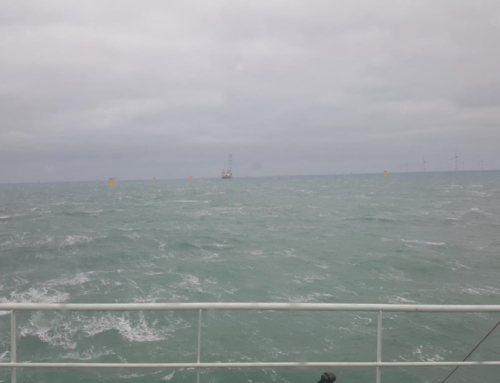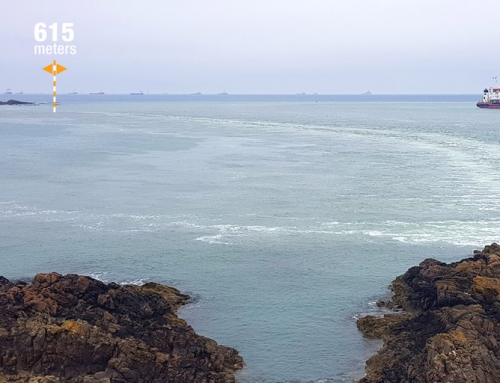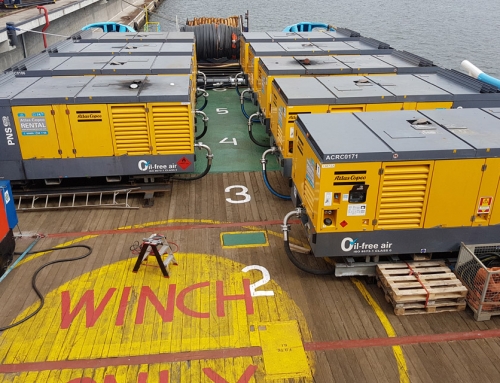The initial spark came from the offshore research project FINO3 in 2008. As part of this project, a noise protection system had to be designed, built, and operated within 6 weeks. To anchor the research platform, monopiles were to be driven into the seabed at a depth of 24 meters, in the opinion of NABU Schleswig-Holstein, much too loud.
Our many years of experience with compressed air barriers in water gave us the chance to test this technology for underwater noise protection as well. As with every new project, we approached FINO3 with confidence. We tested new materials and ultimately developed today’s functioning offshore system through trials.
Cay Grunau, CEO HYDROTECHNIK LÜBECK GMBH
Threatening proximity to the harbor porpoise sanctuary
The engineers at HYDROTECHNIK LÜBECK had already gained excellent noise protection experience when detonating ammunition in the Baltic Sea before FINO3. The Kolberger Heide northeast of the Kiel Outer Fjord was used as an ammunition dumping area after World War II. In 2004 and 2005, large numbers of torpedo heads and sea mines were discovered in various places. 2 km from the coast, this is a constant danger to the entire area.
Big Bubble Barrier in almost all German wind power construction sites
Under the State Criminal Police Office’s auspices in Kiel, parts of the ammunition lying on the seabed should be blown up. A disaster for nature, but above all for the animal world. As a result of a worldwide environmental protection campaign by NABU Schleswig-Holstein, awareness of underwater noise protection was raised across the country. The BSH (Federal Maritime and Hydrographic Agency) issued limit values for all offshore pile-driving work in the North and Baltic Seas’ German area. Building permits will not be issued without compliance.
After FINO3, the first offshore wind power construction sites, alpha ventus (2009) and Borkum West 2 (2011), which were equipped with the underwater noise protection system, soon followed. In the meantime, the Big Bubble Barrier was and is used in almost all wind power construction sites in the North Sea and the Baltic Sea. To date, over 1000 Big Bubble Barriers have been installed.










